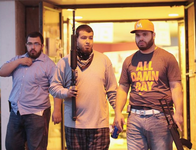Bronze Supporter
- Messages
- 8,630
- Reactions
- 12,873
You don't think this is the type of activity that calls for a curfew? If I was a store owner in that town I would sure as heck be defending my store. If a curfew helps keep people from being shot by store owners that's a good thing in my way of thinking.
.
.
Last Edited:












